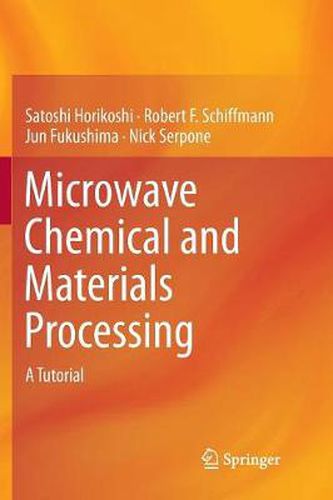Readings Newsletter
Become a Readings Member to make your shopping experience even easier.
Sign in or sign up for free!
You’re not far away from qualifying for FREE standard shipping within Australia
You’ve qualified for FREE standard shipping within Australia
The cart is loading…






This title is printed to order. This book may have been self-published. If so, we cannot guarantee the quality of the content. In the main most books will have gone through the editing process however some may not. We therefore suggest that you be aware of this before ordering this book. If in doubt check either the author or publisher’s details as we are unable to accept any returns unless they are faulty. Please contact us if you have any questions.
The principal aim of this book is to introduce chemists through a tutorial approach to the use of microwaves by examining several experiments of microwave chemistry and materials processing. It will subsequently enable chemists to fashion their own experiments in microwave chemistry or materials processing.
Microwave heating has become a popular methodology in introducing thermal energy in chemical reactions and material processing in laboratory-scale experiments. Several research cases where microwave heating has been used in a wide range of fields have been reported, including organic synthesis, polymers, nanomaterials, biomaterials, and ceramic sintering, among others. In most cases, microwave equipment is used as a simple heat source. Therefore the principal benefits of microwave radiation have seldom been taken advantage of. One reason is the necessity to understand the nature of electromagnetism, microwave engineering, and thermodynamics. However, it is difficult for a chemist to appreciate these in a short time, so they act as barriers for the chemist who might take an interest in the use of microwave radiation. This book helps to overcome these barriers by using figures and diagrams instead of equations as much as possible.
$9.00 standard shipping within Australia
FREE standard shipping within Australia for orders over $100.00
Express & International shipping calculated at checkout
This title is printed to order. This book may have been self-published. If so, we cannot guarantee the quality of the content. In the main most books will have gone through the editing process however some may not. We therefore suggest that you be aware of this before ordering this book. If in doubt check either the author or publisher’s details as we are unable to accept any returns unless they are faulty. Please contact us if you have any questions.
The principal aim of this book is to introduce chemists through a tutorial approach to the use of microwaves by examining several experiments of microwave chemistry and materials processing. It will subsequently enable chemists to fashion their own experiments in microwave chemistry or materials processing.
Microwave heating has become a popular methodology in introducing thermal energy in chemical reactions and material processing in laboratory-scale experiments. Several research cases where microwave heating has been used in a wide range of fields have been reported, including organic synthesis, polymers, nanomaterials, biomaterials, and ceramic sintering, among others. In most cases, microwave equipment is used as a simple heat source. Therefore the principal benefits of microwave radiation have seldom been taken advantage of. One reason is the necessity to understand the nature of electromagnetism, microwave engineering, and thermodynamics. However, it is difficult for a chemist to appreciate these in a short time, so they act as barriers for the chemist who might take an interest in the use of microwave radiation. This book helps to overcome these barriers by using figures and diagrams instead of equations as much as possible.